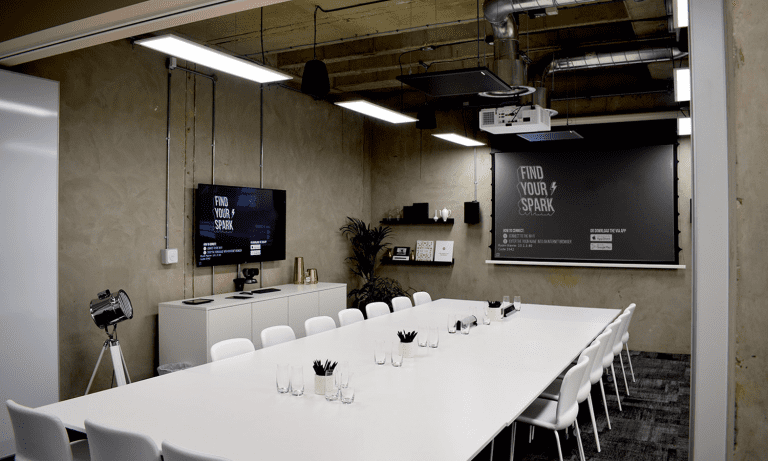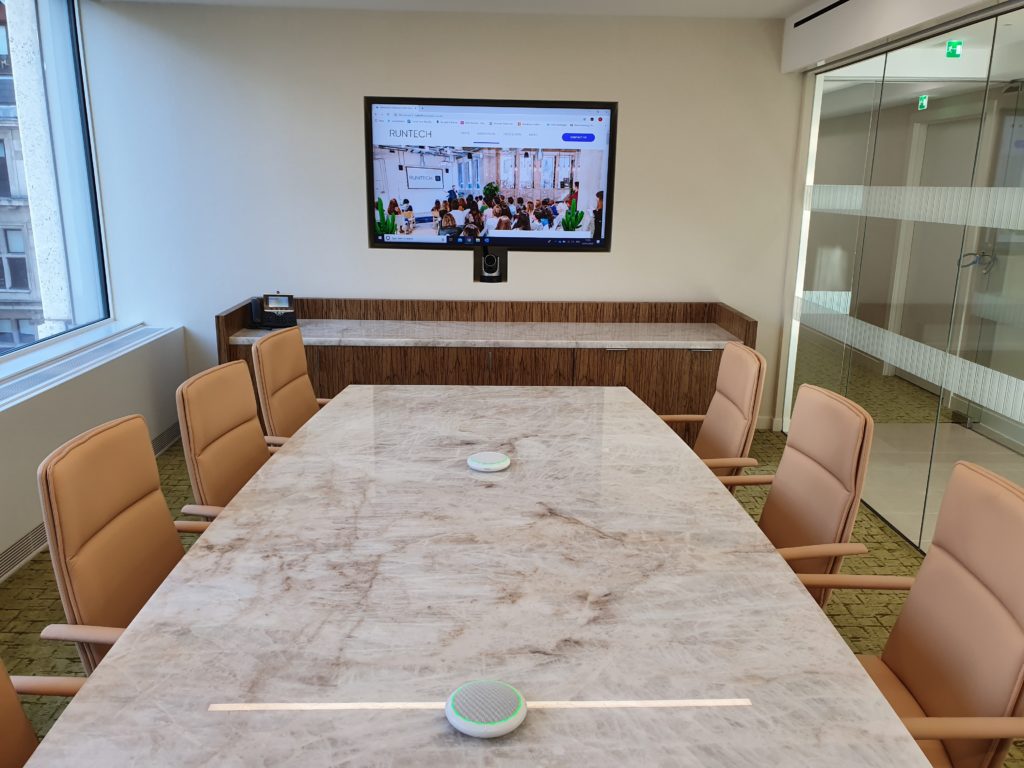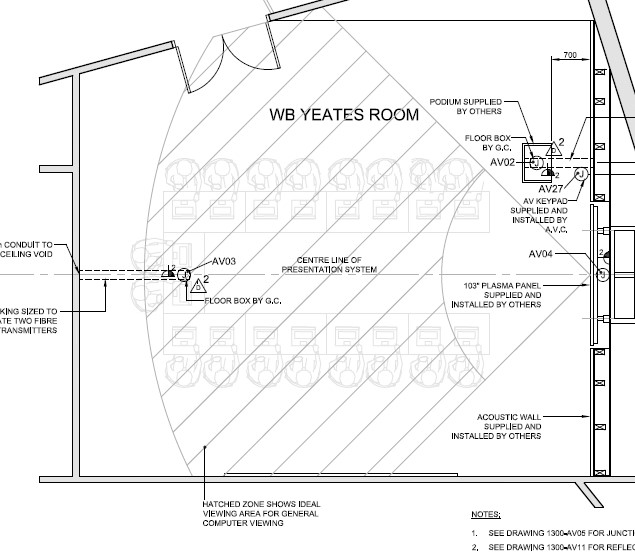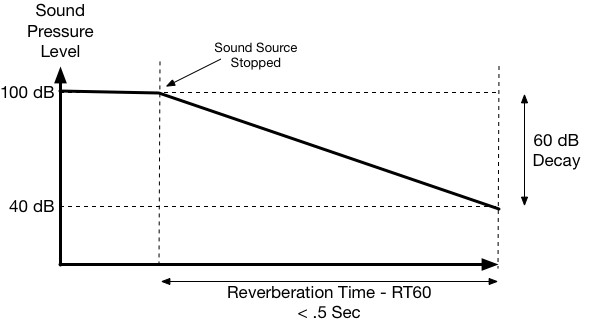How video conferencing can improve remote working productivity
Many businesses are starting to adapt to the UK Governments advice that all non-key-workers should work from home, where possible.
Access to email and chat tools may help workers communicate to a degree. However, collaboration is vital to help teams work effectively in these unprecedented times. Customers need to feel connected and supported, key accounts need to be managed, management needs to implement contingency strategies, and interviews need to be moved online. That why brands like Poly have recently released new personal video products for remote workers.
Fast, simple, on-demand communication is vital as many weekly and monthly tasks now need performing daily.

Room shape and size
Square rooms generally have poor acoustics as they generate extreme highs and lows in critical frequency. However, high ceilings compound the problem.
While it’s not possible to cost-effectively change the shape of a room, it is possible to treat spaces acoustically with sound absorption or sound insulating materials. Acoustic treatment should always form part of AV planning as retrofitting will inevitably lead to disruption and potentially higher costs.
Viewing distance and screen size
There is nothing more agitating than sitting in a presentation where you struggle to read the media on the screen.
Conversely, a screen too large for the viewing distance will quickly become overpowering: eye fixations and cognitive stress increase, which in turn leads to a lack of attention.
AVIXA (Audiovisual and Integrated Experience Association) provide a useful online calculator to establish DISCAS (Display Image Size for 2D Content in Audio Visual Systems). The calculator is used to support AVIXA’s three-option decision-making process for optimal screen size:
- Basic Decisions (BDM) — centred on ‘Computer General’ and video use. (typical viewing applications used in a conference room environment such as PowerPoint, Keynote, significant graphic-based content and video.)
- Analytical Decisions (ADM) — based on ‘Computer Inspection’ applications where users spend long periods analysing mission-critical data and analytics, such as in a command centre.
- BDM and ADM

Example
We’ve used the calculator to establish the optimum viewing distance for an NEC C651Q 65” UHD large-format touch display, situated in a 5m deep room, catering for a 16-seat-table.
The screen height is 831mm, and we can assume the furthest person would sit 4-4.5m away from the display wall.
Here are the results:
| Description | Metric | Unit | Imperial | Unit |
| Image Height (Enter Information – One Side Only) | 831 | mm | 62.0 | Inches |
| Image Height | 831 | mm | 62.0 | Inches |
| Image Width (4:3) | 1108 | mm | 82.7 | Inches |
| Image Width (16:9) | 1477 | mm | 110.2 | Inches |
| Distance to Nearest Viewer | 1.662 | Metres | 10.3 | Feet |
| Distance to Furthest Viewer (Computer – Inspection) | 3.3 | Metres | 20.7 | Feet |
| Distance to Furthest Viewer (Computer – General) | 5.0 | Metres | 31.0 | Feet |
| Distance to Furthest Viewer (Video) | 6.6 | Metres | 41.3 | Feet |
Analysis
The 65” screen is ample for the furthest person at 4-4.5m away to view live video or video playback content.
Also, the 65” screen is excellent for viewing Powerpoint and Keynote presentations.
However, the ability of the furthest person to read ADM type spreadsheets and analytics data is marginal. The results show that the optimal furthest viewing distance for ADM use is 3.3m.
If the intended use is ADM, then increasing the screen size to 75” is logical so the ‘distance to furthest viewer’ becomes 4m.
Results in action
In the following diagram, we show how an AV integrator demonstrates that a recommended screen size is appropriate to cater for the needs of the furthest viewer.
How the room is constructed
After taking the size and shape of the room and the ideal display size into consideration, we need to account for anything that may have an impact on the installation, use, and potential future upgrades:
The floor
A raised floor means you have to consider the height of the void and assess the impact of cable runs and power tracks.
If the floor is solid, how can you conceal cable and power but still have access if someone damages the end of an HDMI cable and it needs replacing?

Ceiling
The ceiling construction determines how to enhance audio. Flush mounted speakers are typically used in suspended ceilings while open ceilings favour pendant speakers.
AC vents and ducts may have an impact on cable raceways and speaker positioning. And if the plan is to incorporate a projector, mounting options and location are a consideration.
Walls
Often a partition wall needs reinforcing to support the weight of a large screen. Ideally, this requires establishing during the room space construction, but options exist to use a wooden patress as a retro-fit.
Coordination with a general contractor is needed in the case of a design and build project. In contrast, an AV contractor will form part of a retro-fit service.
Windows
If an external wall forms part of the space, then it will likely include windows. A floor to ceiling window can allow a large amount of light into the room, even if fitted with regular blinds. Excessive light can have a detrimental effect on near end screen view, so blackout blinds are a consideration.
Lighting
Lighting has a significant impact on people’s mood and attention span.
Harsh lighting, hotspots and dim spots all need accounting for to ensure your audience remains focussed.
Lighting specialists form an integral part of AV project planning, taking into consideration the impact of
- light quality;
- direction;
- colour temperature;
- brightness (Lux level);
- environmental issues;
- aesthetics;
- well-being; and
- regulatory requirements.
Acoustics
Often overlooked and nearly impossible to fix with electronics, poor acoustics lead to irritation, frustrating conference calls, and erratic attention spans.
Acoustic quality is measured in terms of reverberation (reverb for short). Reverb time is the time for sound to fade away in an enclosed space.
RT60 is a reverb calculation based on the time it takes for sound to drop by 60dB when it stops.
Ideally, reverb in a conference room should not exceed 0.5s; otherwise, the reverb creates an echo.

A room made of several hard surfaces will cause the sound to bounce and resonate around the space. In extreme cases, a new sound generates before the existing sound dies off, making the audio extremely hard to understand.Technologies like echo cancellation and soft codec platforms such as ZOOM and TEAMS can help, but these are designed more for huddle spaces than conference rooms. Additionally, microphone pick-up is an essential consideration in a conference room with 16 seats.
Furniture
Making furniture decisions based on aesthetic appeal rather than practicality is commonplace.
So before you decide on an Italian white marble boardroom table, consider these points:
- A table with no power or cable points needs an appropriate cable management solution.
- A reflective table that reproduces the content in a presentation on the tabletop is highly distracting.
- Brilliant white is hard on the eyes as the contrast between all the coloured elements in the room (people, decorations, screen content) and the white surface is extreme.
- Black also causes eye strain and should be avoided.
The role of an AV integrator
Just as the AV integrator brings specialist skills to a project, they also relieve a significant burden from IT Management.
According to a Tech Career Outlook study, 40% of IT pros claim they feel burnt out and intend to switch roles.
So if the prospect of delivering an end-to-end AV project in your organisation seems daunting, the input of a skilled integrator will help.
AV is a specialist trade, and integrators possess detailed knowledge about audio visual technologies and delivering successful projects.
Working with an AV integrator brings specific help with
- system planning and solution design;
- budget management;
- hardware, software, and technology selection;
- project management;
- installation and integration;
- support services; and
- managed services.
About RunTech
RunTech is a pioneering technology and innovation company, helping clients to create meaningful experiences in connected spaces. We deliver AV, voice and data solutions to break down boundaries, overcome distances as a barrier and redefine possibilities in the workplace, hospitality, retail and leisure.
To learn more about aligning business goals with AV capabilities to make your budget go further, contact us below.
